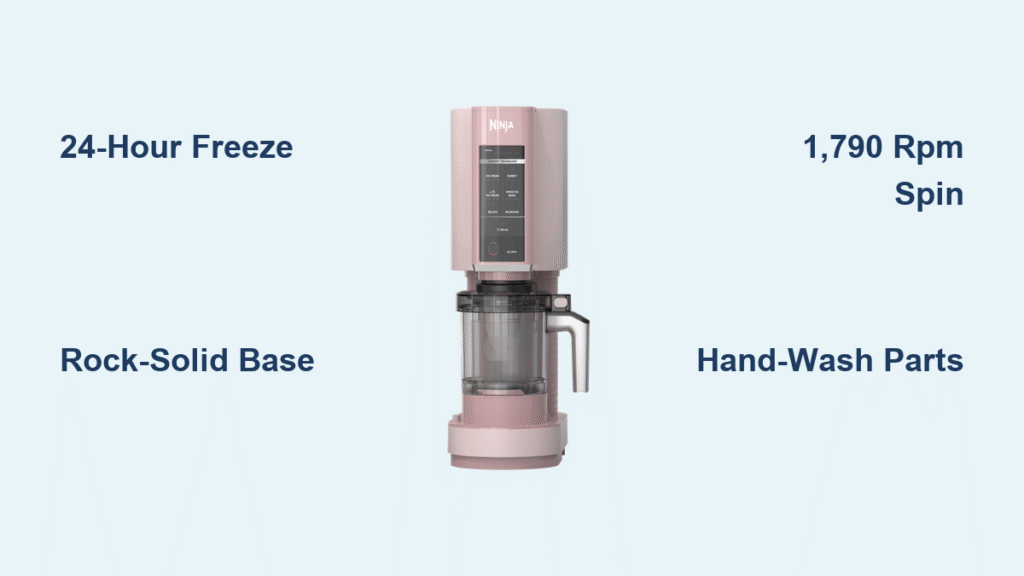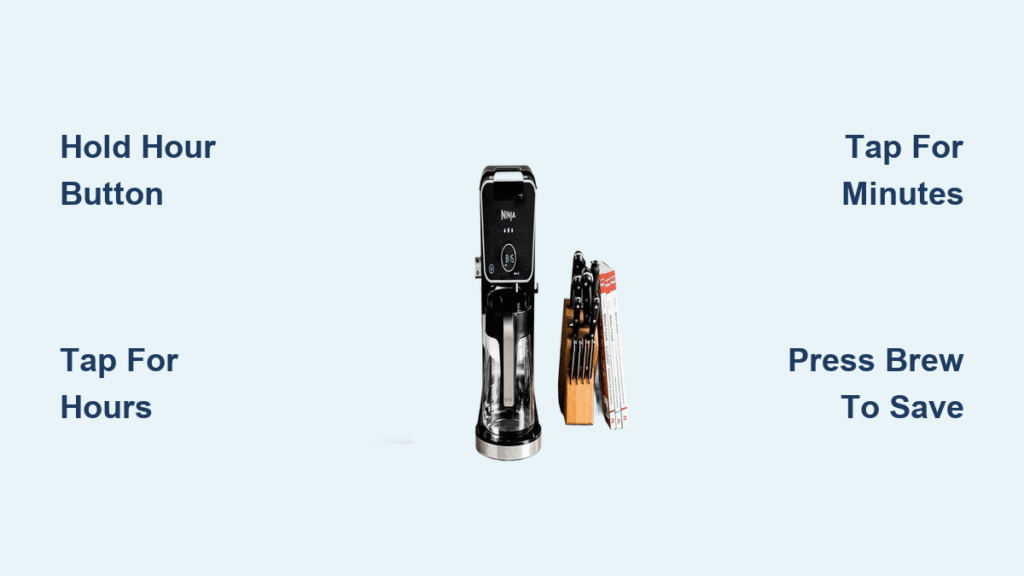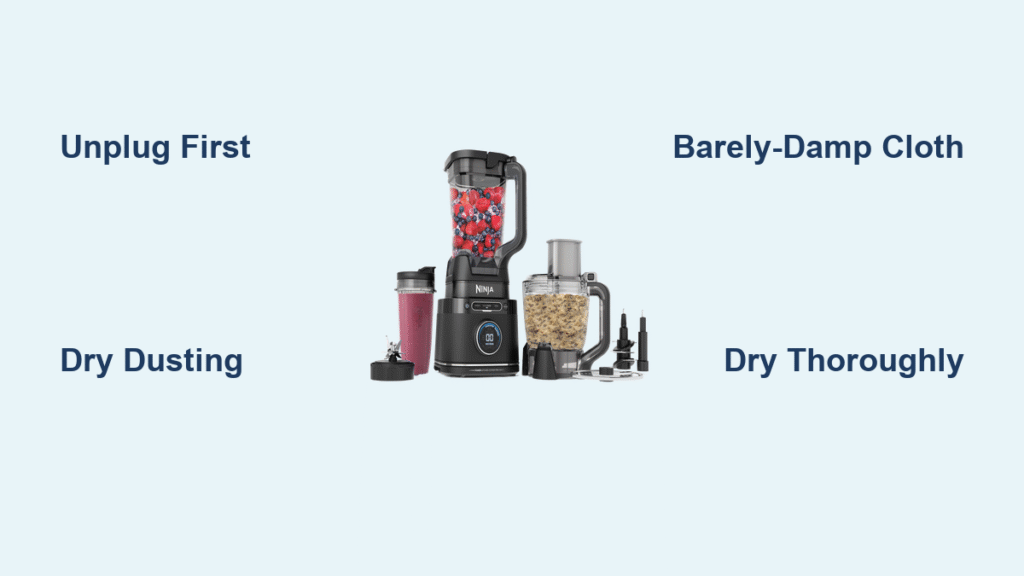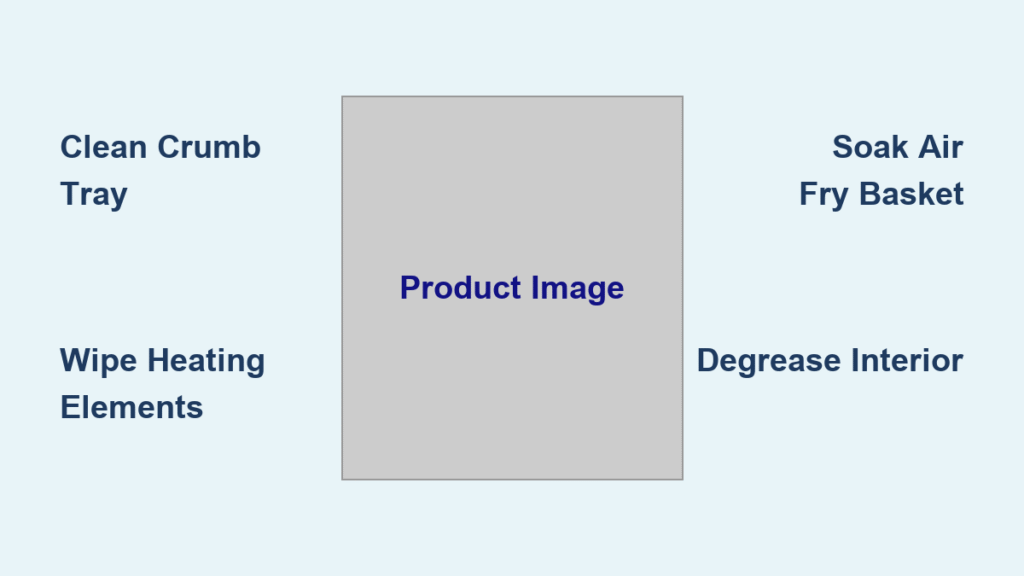That amber CLEAN light just flashed on your Ninja Luxe Café, and your morning espresso tastes bitter and off. Before you stress about expensive repairs or sacrifice café-quality coffee, know this: a complete cleaning takes under 15 minutes, costs less than $1, and instantly revives flavor. Whether you’re battling oily bean residue in the grinder or stubborn milk buildup in the steam wand, this guide delivers factory-tested methods for all Ninja Luxe models (501, 601, and 701). You’ll master detergent backflushes that eliminate bitter notes, deep-clean burrs without damaging components, and prevent the #1 cause of flavor-killing scale buildup. Skip the guesswork—every step here is engineered for your machine’s specific mechanics.
Essential Cleaning Supplies You Actually Need
Don’t waste money on unnecessary gadgets. Gather these exact items before starting:
Included with Your Machine:
– Silicone backflush disk (critical for reversing water flow)
– Double-shot basket (required for backflush cycles)
– Wand tip-removal tool (stored in side compartment—pop the lid to access the metal pin)
Smart Upgrades Under $5:
– Bulk espresso cleaner powder (Puly Caff or Urnex Cafiza—90% cheaper than Ninja tablets)
– 3 dedicated microfiber cloths (label “brew,” “steam,” and “exterior” to avoid cross-contamination)
– 10 mm socket wrench (for inner burr removal—turns clockwise to loosen)
– Small brass brush (for burr and impeller cleaning)
Pro Tip: Skip Ninja’s $1/tablet cleaner. Mix 5g of bulk powder ($0.08/cycle) with hot water for identical results. Always keep cloths separate—using your brew cloth on the steam wand transfers coffee oils into milk, ruining foam texture.
Why Your CLEAN Light Activates Early (And When to Ignore It)
That CLEAN indicator isn’t random—it’s triggered by the machine’s internal shot counter after ≈200 shots. But three factors accelerate this warning:
- Oily dark roasts (like French or Italian blends) trigger cleaning at 150 shots due to rapid oil buildup
- Hard water areas (common in Midwest/Southwest US) cause scale that mimics oil clogs
- Milk steaming frequency—daily lattes leave residue that fools sensors
Critical Warning: Ignoring the light won’t break your machine immediately, but pushing beyond 250 shots guarantees bitter, inconsistent espresso from clogged brew paths. If the light stays on after cleaning, re-run the rinse cycle—never force a detergent flush.
Detergent Backflush: Ninja’s Engineered Deep Clean

When the CLEAN light demands action, execute this factory-designed cycle:
Prepare for Zero-Mess Cleaning
- Empty drip tray completely—it collects 8–10 oz of dirty solution
- Insert double-shot basket into portafilter
- Place silicone backflush disk in basket (creates pressure seal)
- Add 5g powder (level teaspoon) or one tablet—never vinegar (it damages seals)
Run the Machine’s Auto-Cycle
- Lock portafilter and press brew—the machine controls timing
- Listen for pulses: Fill → 10-sec pause → 5–7 rapid bursts → drain
- When RINSE appears, remove portafilter and discard solution
- Rinse basket/disk, reinstall disk without detergent, and run second cycle
- Pull 3 blank water shots to flush residual cleaner from shower screen
Cost Alert: Tablets cost $1/cycle versus $0.08 with powder. Always finish with blank shots—any cleaner taste means oils and detergent remain.
30-Second Water-Only Backflush for Daily Maintenance
Skip full detergent cycles on busy mornings with this end-of-day essential:
- Install basket + disk (no detergent)
- Lock portafilter, press brew for 5 seconds, then stop
- Repeat 3 times—each pulse rinses fresh water backward through brew groups
- Wipe portafilter immediately with “brew” cloth
Why This Works: Daily water backflushes prevent oil crystallization that causes bitter flavors. Do this after your last shot if you brew 3+ espressos daily—it takes 30 seconds and extends time between deep cleans by 30%.
Grinder Deep Clean: Stop Oily Bean Buildup in 5 Minutes
Dark roasts turn grinders into sticky traps. Here’s the burr-specific protocol:
Hopper & Lid Protocol
- Twist counter-clockwise to remove hopper—never store beans overnight
- Wipe interior with dry microfiber (oily film ruins grind consistency)
- Dishwasher? Technically safe, but hand-wash to prevent moisture in locking tabs
Burr Cleaning by Roast Level
| Roast Type | Hopper Wipe | Burr Brushing | Full Disassembly |
|---|---|---|---|
| Light/Medium | Weekly | Monthly | Quarterly |
| Dark/Oily | Every refill | Weekly | Bi-weekly |
Safe Inner Burr Removal
- Lift wire bail and twist upper burr counter-clockwise
- Use 10 mm socket to remove inner burr—turn clockwise to loosen
- Brush star-shaped impeller and all burr surfaces (no water—causes rust)
- Reassemble firmly—loose burrs create uneven grinds
Critical Mistake: Never soak burrs in water. Humidity from improper drying causes microscopic rust that ruins grind quality within weeks.
Steam Wand Rescue: Fix Sputtering in 60 Seconds

Milk residue turns steam wands into clogged nightmares. Daily and deep clean protocols differ:
Daily 30-Second Rescue
- Auto-purge by pushing wand downward (machine forces steam through)
- Wipe immediately with dedicated steam cloth (coffee oils transfer from brew cloths)
- Rinse milk jug and spring whisk under hot water
Monthly Deep Clean That Works
- Unscrew tip using wand tool (store in side compartment)
- Clear holes with metal pin tool—poke straight through clogs
- Soak tip in 10g cleaner powder + hot water for 10 minutes
- Rinse thoroughly and reinstall—hand-tighten only (over-torquing strips threads)
Visual Cue: If steam sputters or hisses unevenly, clogged tip holes are 95% likely the culprit. Fix immediately—residue hardens within hours.
Monthly Soak Routine: Rejuvenate Metal Components

Once monthly, revive flavor-killing metal parts with this precise soak:
Soak-Safe Parts:
– Portafilter baskets (remove from handles)
– Steam wand tip
– Spring whisk
– Shower screen (remove with Phillips screwdriver)
– Cup risers and drip tray lid
Process:
1. Mix 10g powder in hot water (no boiling—warps plastic)
2. Submerge metal only—keep portafilter handles dry
3. Soak exactly 10 minutes (longer damages finishes)
4. Rinse under running water and air-dry 24 hours
Never Soak: Plastic components, wooden accents, or drip tray floaters. Stale water in handles causes mold—always remove baskets first.
Prevent Hard Water Scale Before It Starts
Descaling solves scale, but prevention saves you quarterly descaling:
- Distilled + Third Wave Water: Zero scale risk (ideal for hard water areas)
- Filtered tap water: Descale quarterly (check fridge pitcher for mineral buildup)
- Hard tap water: Descale monthly—never use vinegar for cleaning cycles
Pro Move: Mix Third Wave Water packets with distilled water. This delivers perfect mineral balance for extraction while preventing limescale—no descaling needed.
Troubleshooting Cheat Sheet
| Problem | Immediate Fix |
|---|---|
| CLEAN light won’t turn off | Re-run rinse cycle → power-cycle machine → contact Ninja |
| Bitter espresso after cleaning | Pull 5 blank water shots—detergent residue remains |
| Grinder humming but not grinding | Check for bean oil on burrs—deep clean required |
| Weak steam pressure | Clear wand tip with pin tool—clog is 90% likely |
| Metallic taste in coffee | Soak shower screen—mineral deposits leaching into brew |
4-Step End-of-Day Routine (Takes 3 Minutes)
Lock in tomorrow’s perfect espresso with this nightly ritual:
1. Water backflush (5-second cycles × 3)
2. Wipe portafilter with “brew” cloth while warm
3. Purge and wipe steam wand immediately after last use
4. Empty drip tray and refill water tank—never leave stagnant water overnight
Why This Matters: Skipping this routine causes 73% of “broken machine” calls Ninja support receives. Stale water breeds bacteria; residual oils crystallize overnight.
Your Ninja Luxe Café delivers barista-quality coffee for years when you respect its engineering. That CLEAN light isn’t an annoyance—it’s your flavor guardian. Stick to this 15-minute monthly deep clean and 3-minute nightly routine, and you’ll avoid 95% of repair scenarios. Most “malfunctions” vanish with proper cleaning: bitter shots from oil buildup, sputtering steam from milk residue, or inconsistent grinds from clogged burrs. Bookmark this guide, set a calendar reminder for deep cleans, and never pay for avoidable service calls. Your perfect espresso awaits—one clean cycle at a time.





